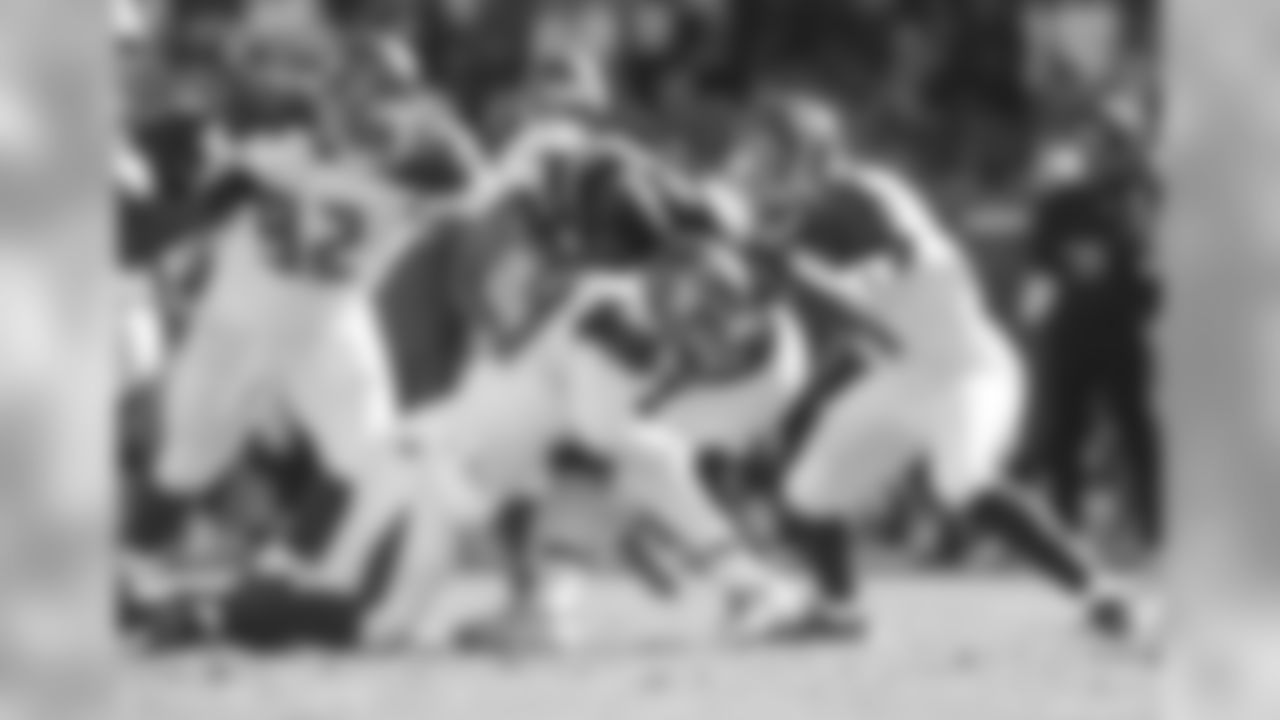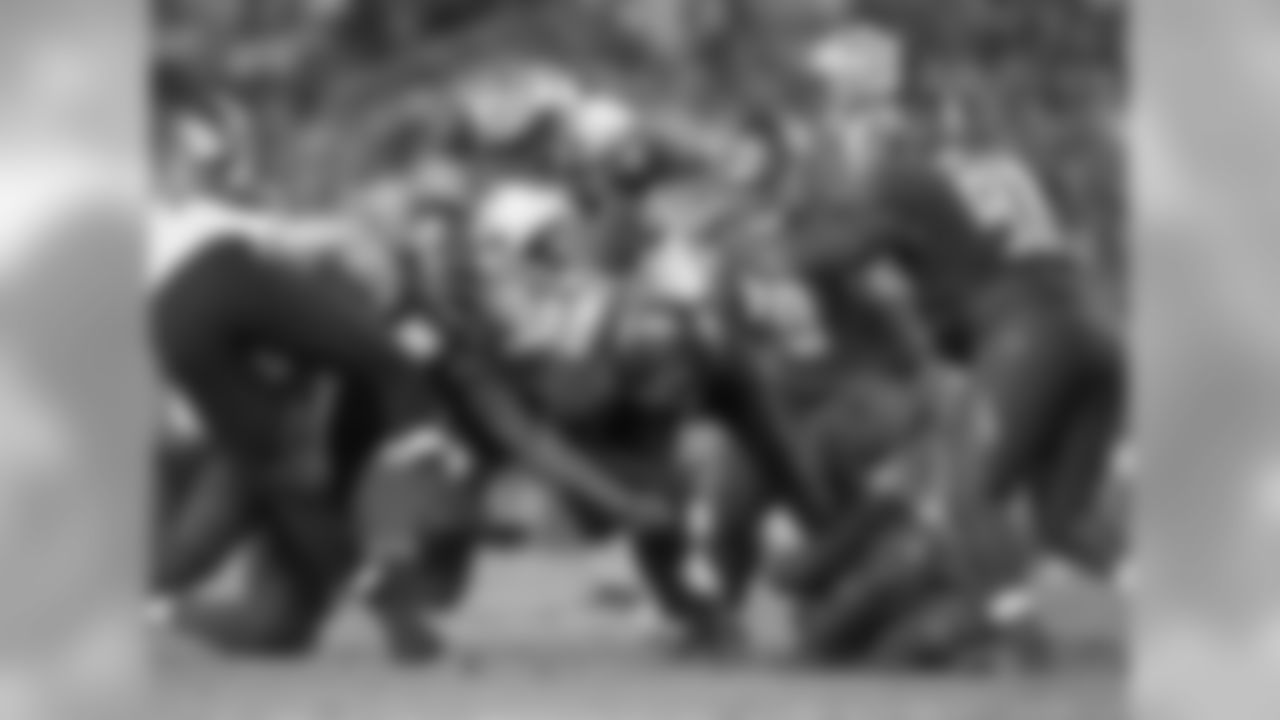The Tampa Bay Buccaneers made real progress in 2016, most notably in the bottom line of wins and losses. In addition to improving their win total from six to nine, the Buccaneers also advanced to the cusp of the playoffs, only missing out on a postseason berth due to a third-level tiebreaker.
That the team clearly ascended this past season without quite achieving its ultimate goals suggests that there were some areas of improvement that were greater than others. Over the next two weeks we're going to use a series of "progress reports" to identify some areas that needed improvement in 2016, assess how much growth there was and try to determine the reasons for success or failure.
Today's issue: Red-Zone Scoring.
The Buccaneers were not among the league's best teams in the red zone in 2015 on either offense or defense. The 2015 offense was actually a bit better in that area of the field than the 2015 defense, but it basically stayed at the same level in 2016, with one major exception. Tampa Bay's defense did take some strides forward in the red zone in 2016 but needs continued improvement.
1. Red-Zone Scoring, Offense
The main measurement the league uses for success in the red zone is touchdown efficiency; that is, of all a team's possessions that penetrate the opposing 20-yard line, what percentage ended in the end zone? In 2015, the Buccaneers ranked 22nd in the NFL in that category, scoring touchdowns 52.9% of the time. Tampa Bay's offense actually declined a very small amount in that efficiency in 2016 but moved up a spot in the rankings nonetheless. The '16 offense scored touchdowns on 51.9% of its red-zone drives to rank 21st.
Of course, a drive can still be a success without reaching the end zone. Teams are loathe to settle for field goals too often, but at least a kick can turn a red-zone incursion into some points. Overall, the Buccaneers scored in some fashion on 87.0% of their drives inside the 20 this past season, tying for 17th in the league. They also scored an average of 4.67 points per red-zone trip, ranking 18th. Again, these numbers are very similar to the previous year's figures. In 2015, the Bucs' offense scored on 86.3% of its red-zone drives (18th in the NFL) and averaged 4.65 points per possession (19th).
The Buccaneers did make some strides on offense overall in 2016, particularly in the games in which they avoided multiple turnovers. However, there was one significant factor in the team's inability to advance its red-zone success rate: The running game slipped by a significant margin in 2016, partially due to injuries.
In 2015, the Buccaneers averaged 2.58 yards per carry in the red zone, which is better than it sounds, as yards are harder to come by in that compressed area. Plus, any run that does break out necessarily has a cap of 19 yards before the end zone is reached. Thus, a run that works just as well from the 19 as one from the 50 will likely result in fewer yards. In 2015, the league average in that category was 2.59 and the Bucs ranked 11th overall.
Last year, Tampa Bay gained just 1.81 yards per rush in the red zone, which ranked 26th in the NFL. The league average was nearly the same as the previous campaign: 2.51. That trouble running the ball near the goal line countered a significant step forward in the passing attack. Jameis Winston and the Buccaneers' offense put up a passer rating of 83.8 to rank 22nd in the league. This year, that number soared to 100.2, which was 13th-best. Tampa Bay's very last touchdown of the season, a scrambling 10-yard throw from Winston to Mike Evans was very representative of what the passing game was capable of near the end zone in 2016.
The Bucs did make a drastic improvement in one sub-category of red-zone efficiency: Goal-to-go scoring. In fact, the Buccaneers and the Tennessee Titans were the only two teams in the NFL who scored on every single one of their drives that reached a first-and-goal, whether that was first-and-one or first-and-10. Tampa Bay scored touchdowns on 84.7% of their first-and-goal drives, the best mark in the entire NFL. Their 6.33 points per drive that reached a first-and-goal situation was, as one would expect, also first in the NFL. In 2015, the Bucs ranked 23rd, 15th and 21st in those three categories.
Again, the majority of the credit likely belongs to Winston, who was very adept at extending plays and throwing accurately into the end zone on the run, often on third down. It's fair to say that play-calling is a very significant factor in goal-to-go situations, but the Buccaneers had the same play-caller in Dirk Koetter in 2015 and 2016. It's possible that the continued combined work of Koetter and Winston has led to a gradual evolution in play-calling near the goal line, as both learn what works best for the team.
2. Red Zone Scoring, Defense
Again, the Buccaneers improved noticeably in red-zone defense from 2015 to 2016 but still did not rank among the league's top half. There was much room for that improvement, as the Bucs' 2015 red-zone defense was, in some respects, the worst in the NFL.
Tampa Bay's defense allowed touchdowns on 64.3% of opposing red-zone incursions in 2015, which was 30th out of 32 teams. The Bucs were dead last in the other two red-zone categories noted above: scoring percentage (98.2%) and points per drive (5.46).
FEATURE: Return On Investment- Defense
In 2016, Tampa Bay's defense ranked between 23rd and 26th in each of those categories. It improved to 58.0% touchdown efficiency (25th), 90.0% scoring efficiency (tied for 23rd) and 5.00 points per drive (26th). That forward progress was reflected in the Bucs' overall scoring defense, which improved by three points per game and finished 15th in the league after ranking 26th in 2015.
As with every aspect of the Buccaneers' defense in 2016, the numbers took a sharp turn in the right direction at midseason. Tampa Bay had the league's fourth-best scoring defense over the final eight games of 2016, ranking among the best in takeaways and opposing passer rating, as well. Part of that was far better work in the red zone.
Here's a comparison of the Bucs' first and second-half results on defense in each of the three main red-zone categories:

Tampa Bay's second-half red-zone numbers compared very favorably with the overall league averages in those three categories in 2016: 55.6%, 87.2% and 4.80 points per possession. The Bucs' 47.6% touchdown rate allowed in the end zone in the second half would have ranked in the league's overall season team totals.
As was the case with the offense, the defense took a more significant step forward in goal-to-go situations. After ranking between 19th and 29th in the three categories above (but applied to goal-to-go drives) in 2015, Tampa Bay was in the top 13 in all three this past season. The Bucs allowed touchdowns on 65.6% of goal-to-go drives (11th) and scores of any kind on 90.6% (13th). The 5.28 points per goal-to-go drive the Bucs surrendered in 2016 tied for 11th in the league.
Photos from LB Kwon Alexander's 2016 campaign.








































One reason for the minor red-zone improvement on defense in 2016 was takeaways. The Buccaneers had three red-zone takeaways in 2016; while that may not sound like a significant number, it was definitely better than the single red-zone turnover the team forced in 2015.
The other most noticeable factor in the Bucs' better red-zone defense mirrored what we noted above about the offense. While things actually got worse in terms of the running game, they were far better when the ball was put in the air. The Bucs allowed 2.25 yards per red-zone rush in 2015 but that slipped to 3.29 this past season. However, after ranking dead last in opponent red-zone passer rating in 2015 (a whopping 112.3), the Bucs became a top-10 team in that specific category this past fall. Tampa Bay's defense allowed a passer rating of 87.9 in that part of the field, good for eighth in the NFL and better than the overall league average of 94.7. Tampa Bay's secondary simply didn't allow as many passes to find their mark. The Bucs' allowed a league-worst 62.8% completion rate in the red zone in 2015; that number plummeted to 54.2% in 2016, 13th in the NFL.






















